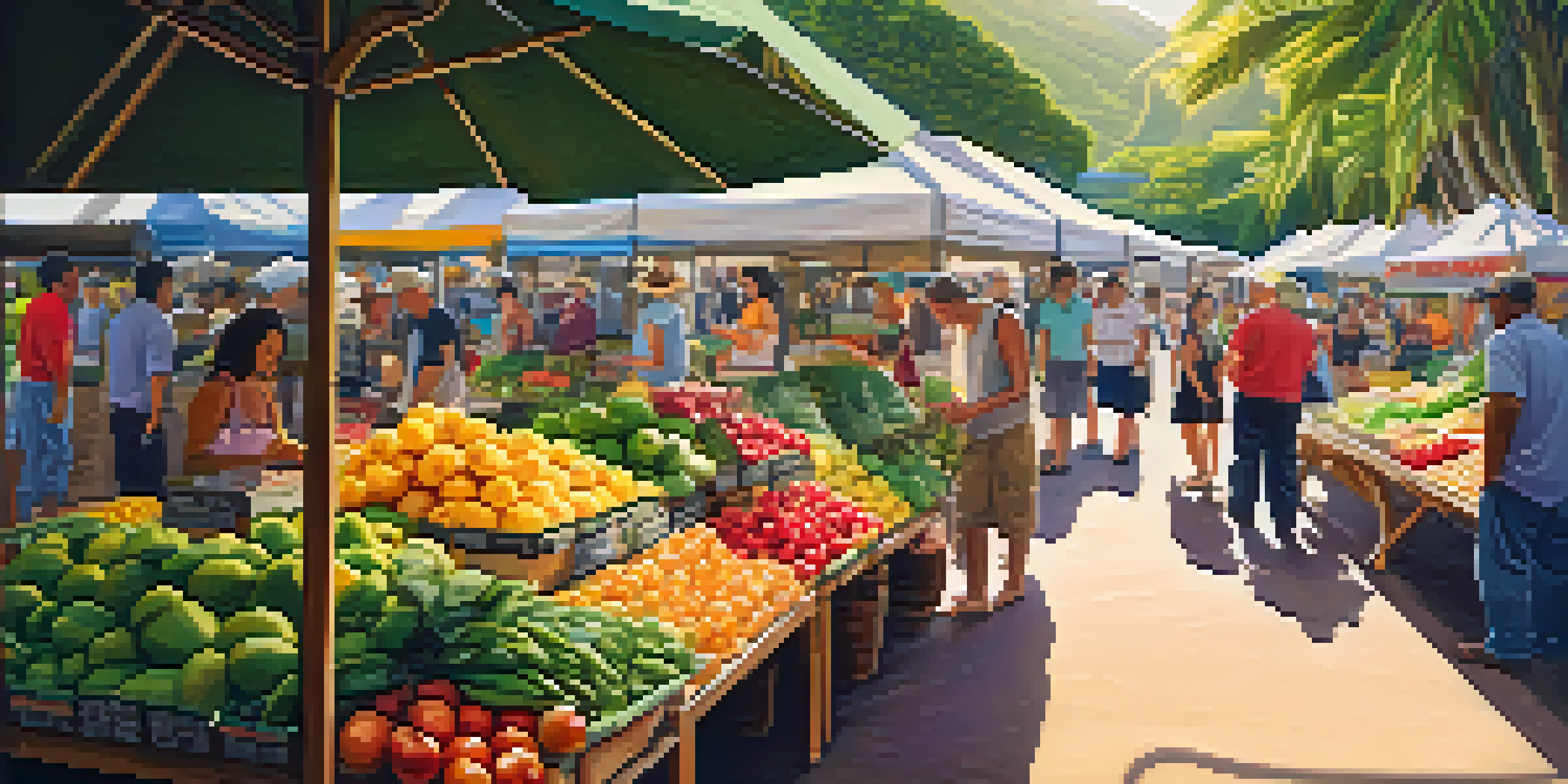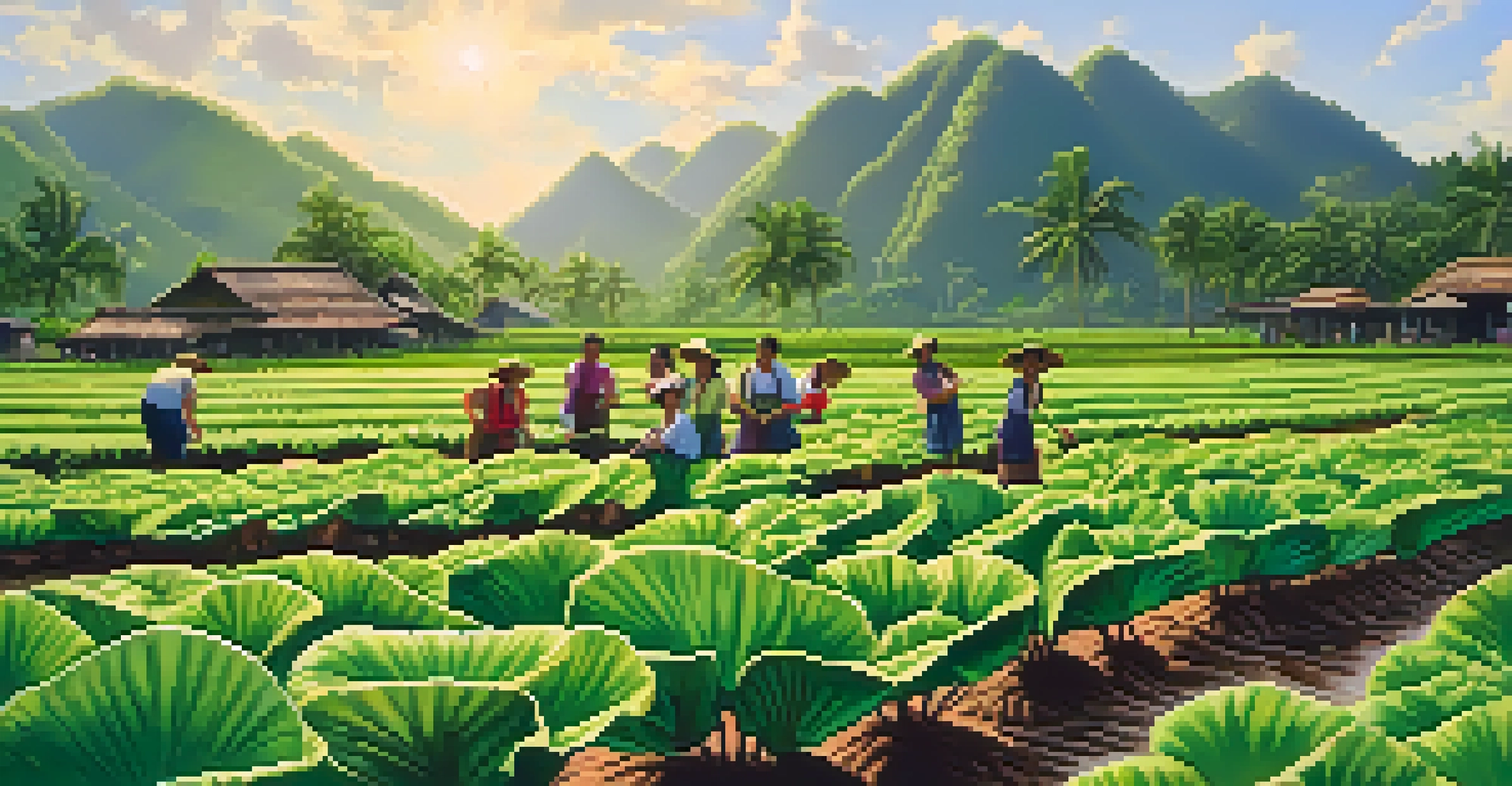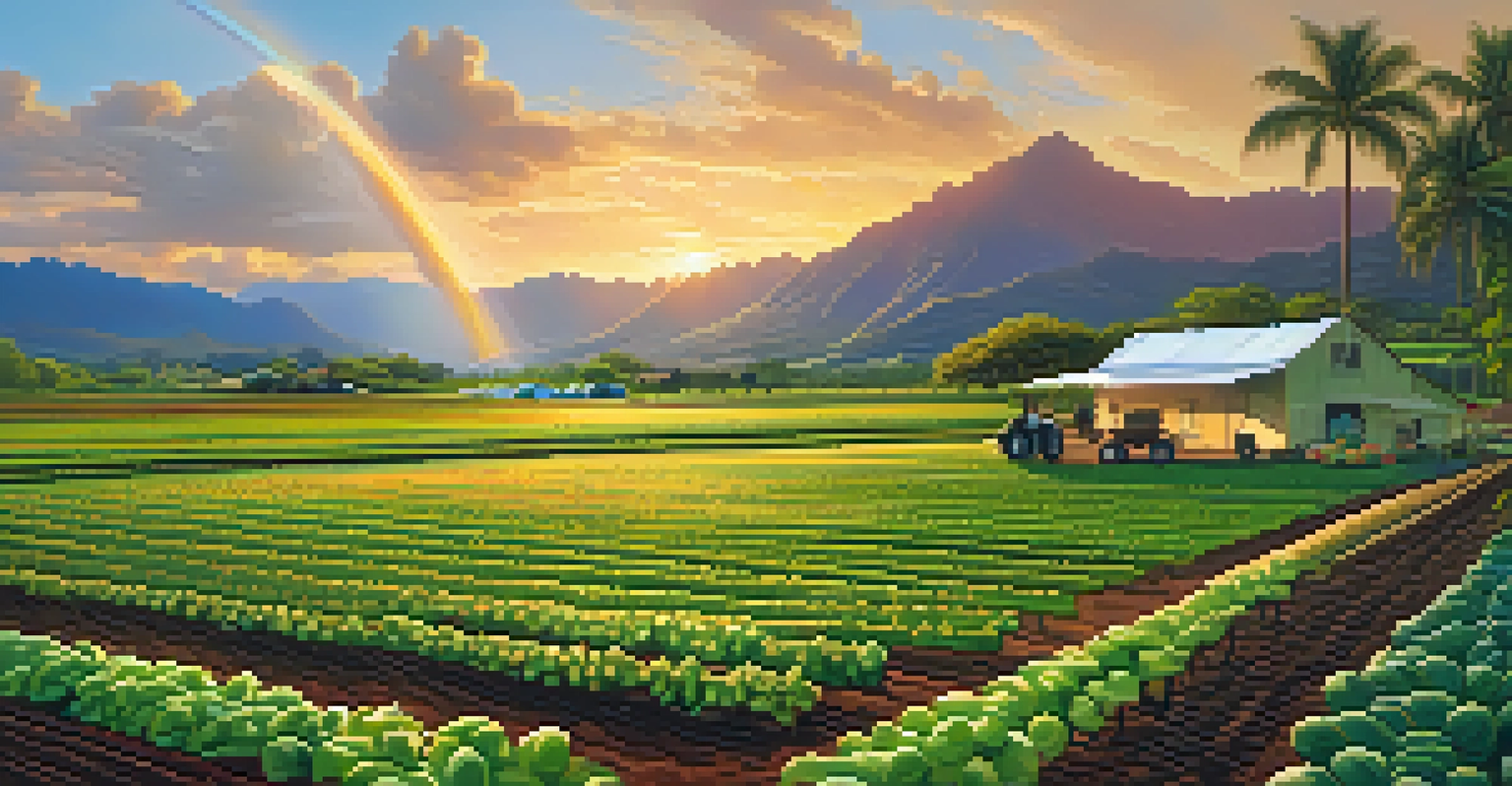Tourism's Influence on Hawaii's Agricultural Sector

The Intersection of Tourism and Agriculture in Hawaii
Tourism and agriculture in Hawaii are intertwined like the roots of a banyan tree. As one of the top tourist destinations globally, Hawaii’s economy heavily relies on the influx of visitors seeking its unique natural beauty. This not only boosts the hospitality sector but also creates a demand for locally sourced food, thereby benefiting local farmers.
Agriculture is our wisest pursuit, because it will in the end contribute most to real wealth, good morals, and happiness.
The picturesque landscapes attract tourists, who often want to experience authentic Hawaiian culture, including its cuisine. This has led to an increased interest in farm-to-table dining experiences, where travelers can enjoy fresh, locally grown produce. Consequently, agricultural practices are adapting to cater to this growing market, emphasizing sustainability and quality.
Moreover, the presence of tourists can influence what crops are cultivated. Farmers are more likely to plant varieties that appeal to visitors, such as tropical fruits and gourmet vegetables, creating a symbiotic relationship between the agricultural sector and tourism.
Local Food Movements and Their Impact on Agriculture
The rise of the local food movement has significantly impacted Hawaii's agricultural sector. Tourists increasingly seek authentic experiences that include sampling local dishes made from fresh, island-grown ingredients. This demand encourages farmers to diversify their crops and adopt sustainable farming practices.

As restaurants highlight local ingredients, they also drive up demand for specific products. For example, the popularity of poke bowls has led to a surge in demand for fresh fish and seaweed, prompting local fishermen and farmers to enhance their offerings. This trend not only bolsters the agricultural economy but also promotes environmental stewardship.
Tourism Boosts Local Agriculture
The influx of tourists in Hawaii creates demand for locally sourced food, benefiting local farmers and promoting farm-to-table dining.
Additionally, local farmers' markets have become popular attractions for tourists, further connecting them to the agricultural community. These markets serve as platforms for farmers to showcase their goods while providing visitors with a taste of Hawaii’s rich agricultural heritage.
Sustainable Agriculture: Meeting Tourist Expectations
Sustainability is more than just a buzzword in Hawaii; it's a necessity driven by both locals and tourists. As travelers become more environmentally conscious, they expect the destinations they visit to prioritize sustainable practices. This shift has encouraged many Hawaiian farmers to adopt eco-friendly methods, from organic farming to water conservation techniques.
Sustainability is not a destination, but a journey that we must take together, ensuring that we leave the planet better for future generations.
By implementing sustainable practices, farmers not only appeal to tourists but also protect the island's delicate ecosystems. For instance, reducing pesticide use and promoting biodiversity helps maintain the natural beauty that attracts visitors in the first place. This dual focus on sustainability and tourism creates a win-win scenario for both parties.
Moreover, tourism initiatives often promote educational experiences centered around sustainable agriculture. Tours and workshops that teach visitors about local farming practices not only enhance the tourist experience but also foster a deeper appreciation for Hawaiian agriculture.
Challenges Faced by Farmers in a Tourist-Driven Economy
While tourism can positively impact agriculture, it also presents several challenges for local farmers. The high cost of land and resources driven by tourist demand can make it difficult for farmers to compete. Many find themselves squeezed between maintaining profitability and keeping prices accessible for locals.
Additionally, the seasonal nature of tourism can create volatility in demand for agricultural products. During peak tourist seasons, farmers may struggle to keep up with orders, while off-seasons can lead to surplus and waste. This unpredictability makes planning and sustainability difficult for farmers who rely on tourism.
Sustainability Drives Farming Practices
As tourists become more environmentally conscious, Hawaiian farmers are adopting sustainable practices to meet their expectations.
Furthermore, the influx of tourists can lead to environmental degradation, such as soil erosion and water shortages. Farmers must navigate these challenges while continuing to provide quality products that meet the expectations of both locals and visitors.
The Role of Agritourism in Hawaii's Agricultural Sector
Agritourism has emerged as an innovative way to support Hawaii's agricultural sector while enhancing the tourist experience. This model allows visitors to engage directly with farming activities, from picking fruits to learning about cultivation methods. Such experiences provide a deeper understanding of the hard work that goes into food production.
By participating in agritourism, tourists contribute directly to the local economy and create a sense of connection with the land. This not only benefits farmers financially but also fosters an appreciation for the cultural significance of agriculture in Hawaiian society. It transforms visitors from passive consumers into active participants in the agricultural narrative.
Agritourism also encourages sustainable practices as farmers showcase their commitment to the land. By educating tourists on sustainable farming techniques, farmers can inspire future generations to prioritize environmental responsibility, ensuring the longevity of both agriculture and tourism in Hawaii.
Cultural Preservation Through Agriculture and Tourism
Agriculture in Hawaii is deeply intertwined with its cultural identity, and tourism plays a crucial role in preserving this heritage. Many traditional farming practices and crops, such as taro, are not just food sources; they are integral to Hawaiian culture and history. Tourists’ interest in experiencing this culture can help sustain traditional agricultural practices.
Farmers often incorporate cultural education into their offerings, sharing stories and practices that highlight the significance of their crops. When tourists learn about the cultural importance of taro farming, for example, they gain a profound appreciation for its role in Hawaiian life, creating a meaningful connection to the land.
Agritourism Connects Visitors and Farms
Agritourism allows tourists to engage with farming activities, fostering a deeper appreciation for local agriculture and its cultural significance.
This cultural exchange enriches the tourist experience and reinforces the value of preserving agricultural traditions. As tourists depart with a deeper understanding of Hawaiian culture, they become ambassadors for these values, promoting respect and appreciation for the islands’ heritage.
The Future of Hawaii's Agriculture in a Tourist-Driven Economy
Looking ahead, the future of Hawaii's agriculture will likely continue to be shaped by tourism. As global travel trends evolve, farmers will need to stay agile, adapting their practices to meet changing consumer preferences. Embracing innovation and sustainability will be key to thriving in this dynamic environment.
Collaboration between farmers, tourism operators, and government agencies will also play a vital role. By working together, they can create initiatives that support local agriculture while enhancing the tourist experience. This collective approach can lead to sustainable growth that benefits the entire community.

Ultimately, the relationship between tourism and agriculture in Hawaii is a delicate balance. With thoughtful planning and a commitment to sustainability, both sectors can flourish together, preserving the islands' beauty and bounty for future generations.